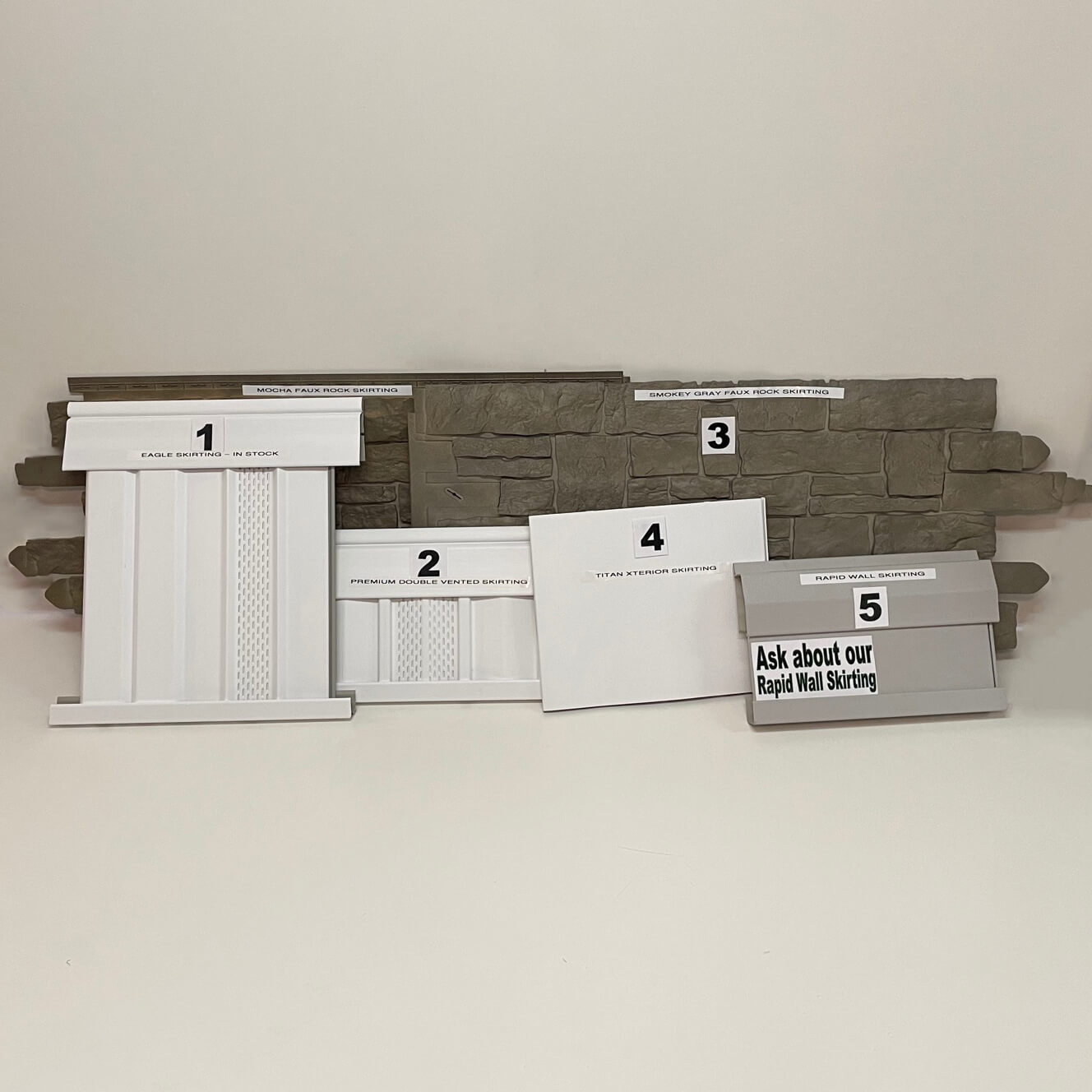Laying the Groundwork for Strong Mobile Home Foundations
A home is nothing without a strong foundation to support it, and that holds especially true for manufactured homes and mobile homes. The foundation for a manufactured or mobile home is especially important, as they not only support the home but provide it with a strong framework to withstand high-impact weather. Think of a mobile home foundation as a chassis that gives your home a dense frame in the form of an undercarriage.
Here, we break down the anatomy of your most common mobile home foundations, as well as some extra considerations to watch out for.
Types of Foundation
The first thing to know when it comes to mobile home foundations is that no two foundations are alike. Compared to other aspects of factory-built homes, the foundation is most often installed at the home site itself, prior to the home being completed.
Foundations have also been held to stricter code regulations since the Department of Housing and Urban Development (HUD) enacted safety codes for manufactured homes in 1976. That same code dictates guidelines for manufactured home foundations – for instance, the types of wood or padding to be used in any given foundation, or the degree to which special footing is needed to protect against frost damage. Refer to the manufacturer’s set up instructions and local authority for the rules for your area.
When looking at mobile home foundations, there are several types you’ll come across:
Pier and Beam Foundation
The “pier and beam” foundation system is far and away the most common type of foundation you’ll find in a manufactured or mobile home. This foundation system consists of two main parts: the concrete cylinders that anchor into the ground, and the steel beams that connect them all together and support the home.
There are multiple reasons why the pier and beam foundation is the go-to in the manufactured housing industry. For one, this foundation type is adaptable to nearly any manufactured home in any environment, and will provide the same level of reliability no matter where it’s installed. The installation process is perhaps the quickest out of any foundation type for mobile homes, too.
With this type of foundation, the concrete can be either poured on-site or precast and brought to the installation site. For instance, some homes in the southern U.S. won’t rely on poured footings as much in favor of ground sets.
But are there any downsides to the pier and beam foundation system? If anything, this type of foundation may need extra support if a mobile home is sited in a flood zone or an area that experiences high winds. While this isn’t a cause of concern for many mobile home owners, it may change how a foundation is installed depending on your environment.
Slab Foundation
Slab foundations consist of a flat surface, usually concrete, that sits on a flat plot of land for the home to sit on. These slabs will also sit on a layer of looser materials under it, such as gravel, for stability. Slab foundations can be installed with or without added piers, similar to the ones mentioned above, for added support.
Slabs are an economical choice for a manufactured home foundation, and often carry better flood ratings for a mobile home foundation compared to other types. Many mobile homes use a slab foundation simply because it’s not only one of the cheapest and most reliable options, but because the installation process is quick, too.
However, a slab foundation cannot be used for just any manufactured home. The site on which the manufactured or mobile home will sit must be relatively flat, to ensure the slab foundation can evenly support the home. However, this ensures a more permanent foundation for your mobile home that can resist high-winds. Additionally, mobile homes with added fixtures, such as a garage or basement, may not support a slab foundation.
Basement Foundation
A basement foundation is exactly what it sounds like – a foundation for a mobile home that gives your home a basement.
The most direct benefit of a basement foundation is the added space for your mobile home. Installing a basement foundation gives any homeowner that much more room for entertainment, storage, or an extra bedroom. The extra living space is a major bonus for many mobile home owners.
However, it’s worth noting that a basement foundation will be among the most expensive foundation types for your mobile home. This is because they take much longer to install than other foundation types, involve more excavation, and of course increases the retail value of the home. A basement foundation also does not offer the same level of flood protection like other foundations do, but they do provide other types of weather protection, even giving you and your family a shelter in case of tornadoes. For these reasons, basement foundations aren’t as common as pier-and-beam foundations.
Crawlspace Foundation
A crawlspace foundation, similarly to a basement foundation, takes advantage of the open space under the home to help support it. Unlike a basement, however, the crawl space isn’t a usable living space.
Crawlspace foundations are usually reserved for site-built homes, so while you won’t find them on a mobile home as often as a pier-and-beam or slab foundation, you’ll occasionally find them in mobile homes found in flood zones, as the crawl space elevates the home off the ground and away from potential floodwaters. Installation for these foundations are among the most expensive, and often take longer than the other types of foundation we’ve covered here.
Foundation Considerations
Regardless of what type of foundation your manufactured home has, there are a few extra considerations to keep in mind:
- All manufactured or mobile home foundations should be up to safety code, including those imposed by HUD.. All of the above foundation types are HUD-compliant when installed correctly, though some other forms of foundation, such as “ribbon” foundation, have been phased out and are no longer considered safe for manufactured homes.
- If you’re getting ready to purchase a manufactured home, ensure you’re aware of what kind of foundation your home has, and what maintenance, if any, may be required. The home seller should be able to provide you with this information.
- If you live in a manufactured home community or mobile home park, they may have specific guidelines on foundations for new or existing mobile homes within their park.
Whether a mobile home has a pier and beam, slab, basement, or crawlspace foundation, these four foundation types are the most common for a reason: they provide the crucial support and stability a manufactured home needs for years, even decades after it’s been delivered from the factory. Keeping up with what each type of foundation provides, however, can bring you up to speed with what to look for when shopping for a manufactured home, and what foundation might be best for a home in your area.









